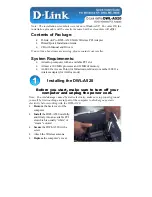
Chapter 2
Installation
2-4
ni.com
Safety Information
Cautions
The following paragraphs contain important safety information you must follow
when installing and operating the device.
Do
not
operate the device in a manner not specified in the documentation. Misuse of the
device may result in a hazard and may compromise the safety protection built into the
device. If the device is damaged, turn it off and do not use it until service-trained personnel
can check its safety. If necessary, return the device to National Instruments for repair.
Keep away from live circuits. Do not remove equipment covers or shields unless you are
trained to do so. If signal wires are connected to the device, hazardous voltages can exist
even when the equipment is turned off. To avoid a shock hazard, do not perform procedures
involving cover or shield removal unless you are qualified to do so. Disconnect all field
power prior to removing covers or shields.
If the device is rated for use with hazardous voltages (>30 Vrms, 42.4 Vpk, or 60 Vdc), it
may require a safety earth-ground connection wire. See the device specifications for
maximum voltage ratings.
Because of the danger of introducing additional hazards, do not install unauthorized parts
or modify the device. Use the device only with the chassis, modules, accessories, and
cables specified in the installation instructions. All covers and filler panels must be
installed while operating the device.
Do
not
operate the device in an explosive atmosphere or where flammable gases or fumes
may be present. Operate the device only at or below the pollution degree stated in the
specifications. Pollution consists of any foreign matter—solid, liquid, or gas—that may
reduce dielectric strength or surface resistivity. Pollution degrees are listed below.
•
Pollution Degree 1—No pollution or only dry, nonconductive
pollution occurs. The pollution has no effect.
•
Pollution Degree 2—Normally only nonconductive pollution occurs.
Occasionally, nonconductive pollution becomes conductive because
of condensation.
•
Pollution Degree 3—Conductive pollution or dry, nonconductive
pollution occurs. Nonconductive pollution becomes conductive
because of condensation.















































